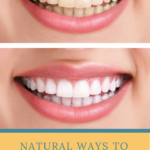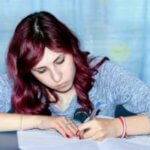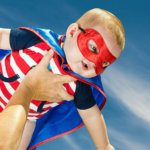GUEST BLOG: Alexandra Theodorakidis, Editorial Assistant, AboutKidsHealth.com
We all have memories of the times when our children were learning to walk or ride a bike and were only seconds away from a fall! It’s common for children to bump their heads when playing or finding new ways to move around. In most cases, the resulting injury is minor, with maybe a small scrape or bruise, but sometimes head injuries can be more serious, resulting in bumps, swelling or even concussion.
To mark June as Brain Injury Awareness Month, we offer some tips from AboutKidsHealth on how to recognize and respond to a concussion and help your child prevent a head injury.
How to recognize a concussion
A concussion is an ‘invisible’ brain injury that affects the way a child thinks and remembers. It cannot be seen on x-rays, MRIs or other forms of brain imaging. And it can occur even if a child remains conscious after a head injury.
Concussions can be difficult to recognize in very young children because they can’t clearly explain how they’re feeling. In general, however, a child with concussion may experience physical changes as well as changes in behaviour, thinking problems and trouble sleeping.
Physical changes
- Headache
- Nausea or vomiting
- Vision changes
- Loss of consciousness
- Loss of balance, poor co-ordination
Changes in behaviour
- Irritability
- Sadness
- Anxiety
Thinking problems
- Slowed reaction times
- Confusion
- Memory loss or difficulty concentrating
Symptoms don’t always appear right away. In fact, sometimes they don’t appear until hours, days or even months after the injury.
Most people recover from a concussion quickly, but it can take some young children and teens longer to recover. This is why it is extremely important to plan a very gradual return to regular activities afterwards. And if your child suffers a sport-related concussion, it is vital that they recover completely before they return to the playing field.
How to help your child protect their noggin!
It’s impossible to protect kids from every fall, bump or scrape. But there are steps you can take to prevent head injuries. Make sure your child always wears a properly fitted helmet when doing any sport or physical activity that could cause them to hit their head. If you have questions about helmets, AboutKidsHealth has a video on making sure your child’s helmet is fitted properly.
Even when you know which helmet to use and how to fit it, getting your child to actually wear one can still be a challenge. This is where you need to lead the way, for instance by not allowing your child to ride a bicycle unless they are wearing a helmet and by wearing a helmet yourself. This fun page for kids can help you explain why helmet safety is so important.
For more child health tips, visit AboutKidsHealth.ca, SickKids’ patient education website.
Source: SickKids Foundation





Leave Your Reply